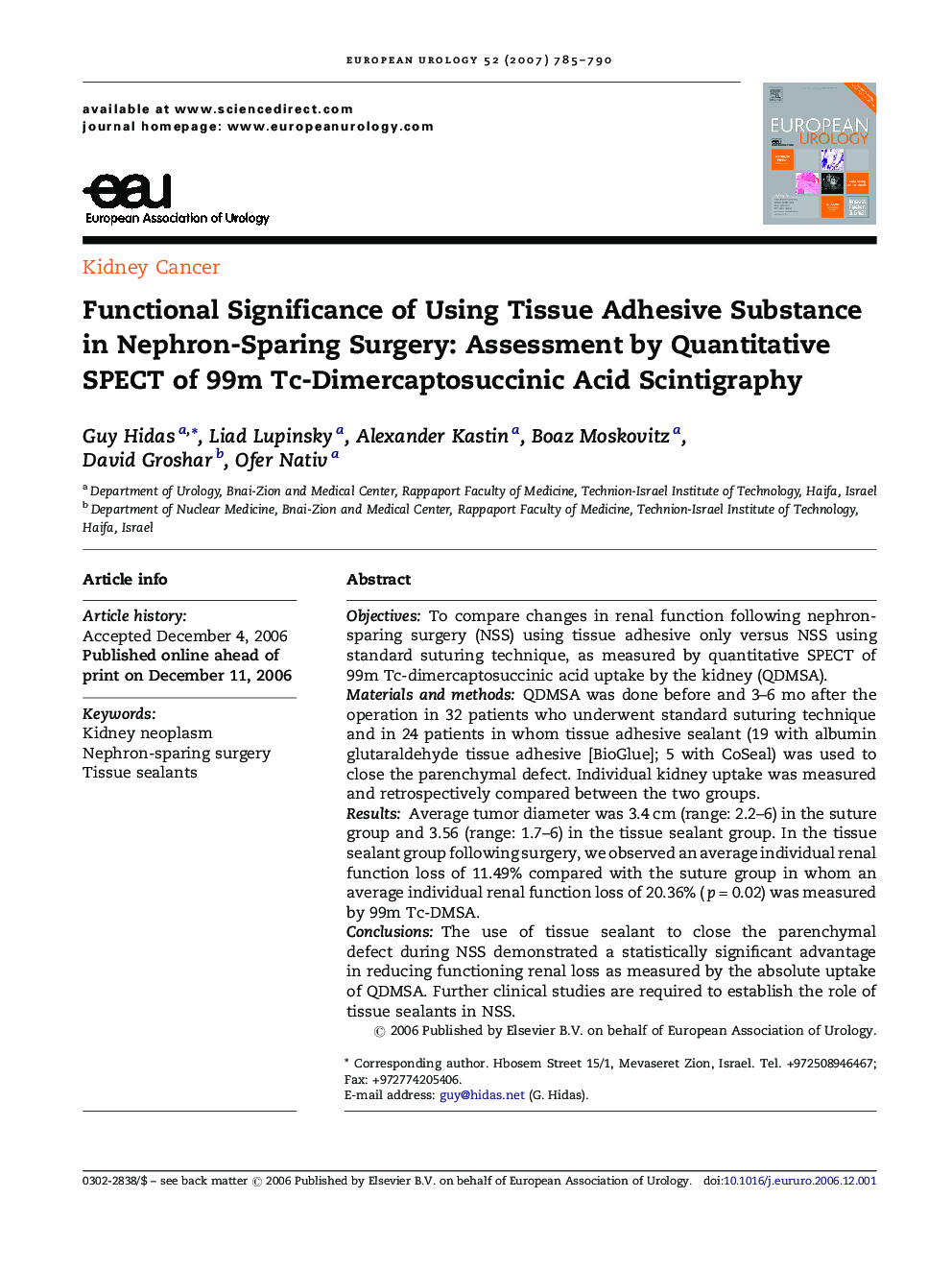| کد مقاله | کد نشریه | سال انتشار | مقاله انگلیسی | نسخه تمام متن |
|---|---|---|---|---|
| 3926072 | 1253142 | 2007 | 6 صفحه PDF | دانلود رایگان |

ObjectivesTo compare changes in renal function following nephron-sparing surgery (NSS) using tissue adhesive only versus NSS using standard suturing technique, as measured by quantitative SPECT of 99m Tc-dimercaptosuccinic acid uptake by the kidney (QDMSA).Materials and methodsQDMSA was done before and 3–6 mo after the operation in 32 patients who underwent standard suturing technique and in 24 patients in whom tissue adhesive sealant (19 with albumin glutaraldehyde tissue adhesive [BioGlue]; 5 with CoSeal) was used to close the parenchymal defect. Individual kidney uptake was measured and retrospectively compared between the two groups.ResultsAverage tumor diameter was 3.4 cm (range: 2.2–6) in the suture group and 3.56 (range: 1.7–6) in the tissue sealant group. In the tissue sealant group following surgery, we observed an average individual renal function loss of 11.49% compared with the suture group in whom an average individual renal function loss of 20.36% (p = 0.02) was measured by 99m Tc-DMSA.ConclusionsThe use of tissue sealant to close the parenchymal defect during NSS demonstrated a statistically significant advantage in reducing functioning renal loss as measured by the absolute uptake of QDMSA. Further clinical studies are required to establish the role of tissue sealants in NSS.
Journal: European Urology - Volume 52, Issue 3, September 2007, Pages 785–790